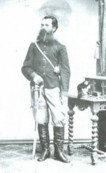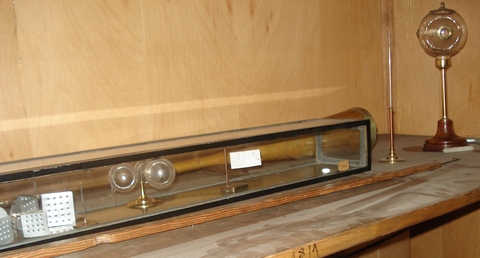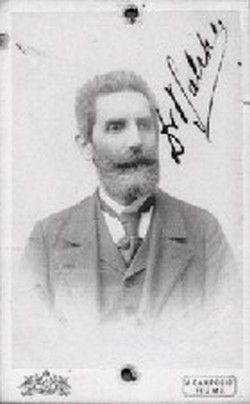
Science (5)
History of Croatian Science, 15th-19th centuries
Some important discoveries in the field of Croatian archeology were accomplished by don Frano Bulic (1846-1936). Especially important was a discovery of an inscription on the sarcophagus of queen Jelena (10th century).
 One of the pioneers of telegraphy is Ferdinand Kovacevic (1838-1913). He invented the possibility of telegraphic connection along a single wire (the duplex connection), whereas before four wires had been used. By the way, Zagreb had its telegraph lines only six years after the first telegraph lines in the world introduced by Morse (Washington-Baltimore, 1844). Telegraph connection with the Croatian region of Lika, where Kovacevic was born, had been established already in 1854. Kovacevic published several electrotechnical books in Zagreb in German language. It is interesting that Ferdinand Kovacevic was born in the village of Smiljan in Lika, i.e., in the same village as Nikola Tesla.
One of the pioneers of telegraphy is Ferdinand Kovacevic (1838-1913). He invented the possibility of telegraphic connection along a single wire (the duplex connection), whereas before four wires had been used. By the way, Zagreb had its telegraph lines only six years after the first telegraph lines in the world introduced by Morse (Washington-Baltimore, 1844). Telegraph connection with the Croatian region of Lika, where Kovacevic was born, had been established already in 1854. Kovacevic published several electrotechnical books in Zagreb in German language. It is interesting that Ferdinand Kovacevic was born in the village of Smiljan in Lika, i.e., in the same village as Nikola Tesla.
A zoologist of international reputation Spiridion Brusina (born in Dubrovnik, 1845-1908), analyzed and classified 600 fossil species. He has a great merit for popularizing science in Croatia. Natural scientists throughout Europe named in his honor about 50 species according to his name.
Vinko Dvořák (1848-1922), Czech who came from Prague to Zagreb in 1875 and was lecturing physics at the University of Zagreb, was the student of Ernst Mach. He is well known by his discoveries in acoustics, especially about acoustic forces. He was the first constructor of an acoustic radiometer, which has been unjustly attributed to Rayleigh. Information by professor Vatroslav Lopasic, professor of physics at the University of Zagreb.

Parts of acoustic radiometer constructed by Vinko Dvořák, kept in the Department of Applied Physics of the Faculty of Electrical Engineering and Computing, University of Zagreb. The aim of the instrument is to study mechanical effects of sound.
Peter Salcher (1848 – 1928), professor at the Rijeka Naval Academy, was a close associate of Ernst Mach and succeeded in what the famous physicist could not achieve - to make a picture of the invisible. Mach wanted to provide experimental evidence of his hypothesis about the existence of a shock wave around objects moving at speeds greater than the speed of sound. Therefore, he asked Salcher to try gaining such evidence in his laboratory in Rijeka. No sooner said than done.

Peter Salcher, author of the first ultra-fast photo of a shock wave
around flying gun bullet
In 1886, Salcher and his associate Sandoro Riegler took a series of ultra-fast photographs of the acoustic phenomena that arise around a flying gun bullet, thus proving the existence of the shock wave, today also known as the sound barrier.

The Salcher photo of the shock wave around flying gun bullet. Source.
His work was a scientific sensation. Could the unit for the speed of sound, instead of Mach, have been Salcher? We'll leave that question unanswered and just remember that Salcher during his experiment actually took the first ever photographs of – a flying bullet. Source of the text www.kvarner.hr .
One of the students of Peter Salcher was Ludwig von Trapp.
